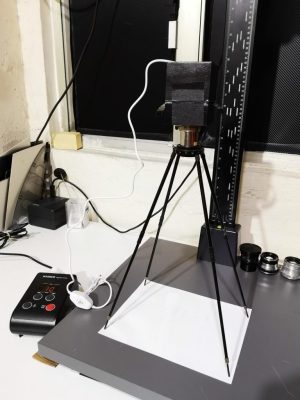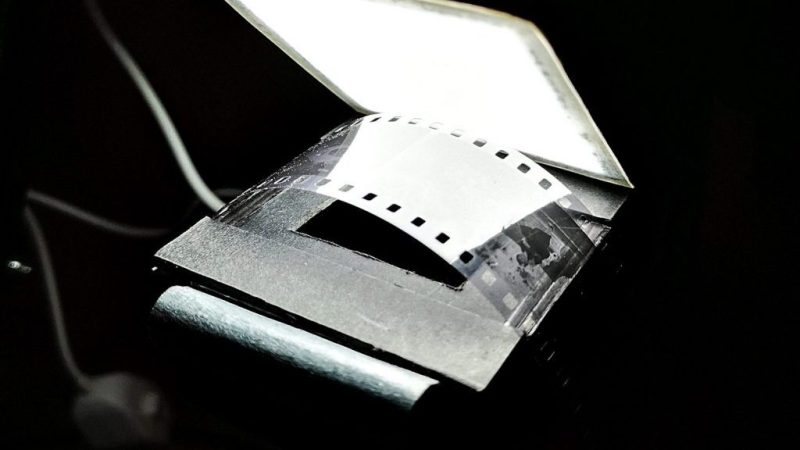Chemical-based photography can seem like a dark art at times, but it needn’t be so. [Dan K] developed the Simple Enlarger to help spread the idea that classical photographic darkroom tools are fundamentally quite easy to understand and build.

A photographic enlarger illuminates a negative with light, and focuses this light on a sheet of photographic paper which can then be developed. [Dan’s] enlarger design is intended to be built using materials readily available from any dollar store or stationer’s shop, and can be built in just a few short hours. It’s built to work with a single film format and with a fixed size of photographic paper for simplicity’s sake.
A simple M-mount camera lens is pressed into service for the main optic, with the ex-Soviet part chosen for its easy focusing and cheap price. A small plywood box makes a decent body, and a white phosphor LED provides the light source. The final rig is designed to print 35mm negatives on to standard 8×10 paper.
If you want to get into developing your own negatives and don’t want to buy a commercial enlarger, [Dan]’s build could be just the way to go. We’ve seen some other similar builds before, too. Meanwhile, if you’ve got your own nifty darkroom hacks, be sure to drop us a line!
















Great project,but it was a few years ago now…
Come to think of it, I think enlargers more or less create the necessity for darkrooms… until you get an enlarger, you can do pretty much everything with fumbling around in a “glove box” type affair or under a heavy blanket, or with specially designed processor tanks and accessories. To just develop film, and maybe contact print it, to small pieces of photo paper.
So more of a “to build your darkroom around” item, rather than an addition… though of course darkroom would be easier for more easy rapid processing of numbers of rolls of film, rather than singles.
That’s it.
I think, not having a room that is suited to be used as a darkroom is a bigger hurdle for most people than not having an enlarger.
You can get complete darkroom equipment used for ridiculous prices now, at a fraction of the original costs.
A separate room with water that can be adequately darkened in your house/flat not so much.
But regarding this project: we’re on Hackaday, so I appreciate the hacky solution to an enlarger.
Excuses…most houses/apartments have a bathroom with no window and unless you are making massive enlargements, more than, enough space somewhere in the room for an 8×10 spot to do something like this. Developing trays can be sent in a bathtub if counter space is limited. Aluminum foil on a window will solve the issue if you lack a windowless room. Painters tape and foil around the jam/door bottom will also light trap anything coming into the room from the door frame. 15 minutes of work and 25-50 cents and anyone can have a darkroom. Granted it isn’t as “nice” as a dedicated developing room but results can be equally as good from a photo product than any professional space you could construct. If you really want to do it, there are plenty of creative ways…
Just out of curiosity, have you tried Variable Contrast papers with filters? From what I’ve learned, there are two basic types of silver halide in the paper, one that is sensitive to blue (fast responding, high contrast) and one that is sensitive to green (slow responding, low contrast). Between the two, you can alter the contrast of the image via contrast filters that block various amounts of one or the other. Since white LED bulbs are usually a combo of blue and a set of phosphors to add yellow/orange/red, I’m curious to see what the affect on the VC paper is for the green sensitive halide. I’ve recently bought some LED bulbs just in case the incandescent in my enlarger burns out, and am getting ready to attempt this experiment.
Should have RTFA. Yes, there’s examples with filters. Looks like the LED one has a little less definition in the 00 filter level, but otherwise could be compensated for.